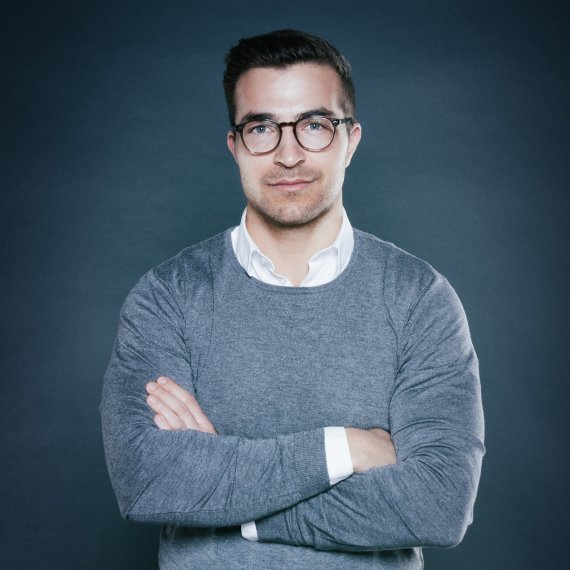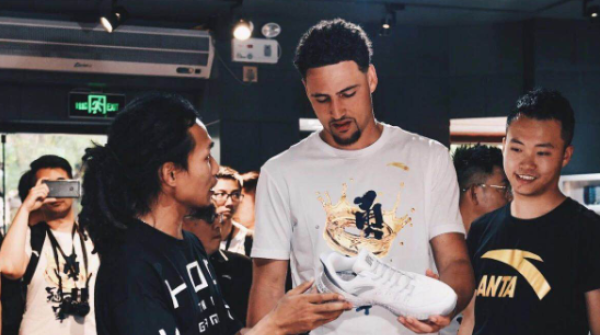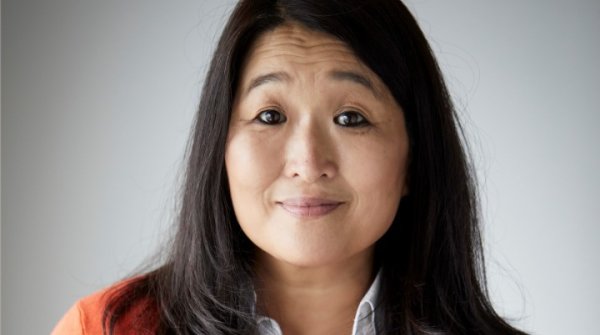
Health club memberships, complex machines, time-consuming? Freeletics has demonstrated that fitness training requires no frills: All you need is the weight of your own body. The app-based fitness programme has a huge community that is a source of both challenge and support.
This concept has allowed Munich-based Freeletics to win millions of users around the globe – and an end is not in sight. CEO Daniel Sobhani, speaker at the startup conference Bits & Pretzels outlines the company's motivation, the importance of the community and gives important tips for startups.
What is more important for Freeletics' success: the product itself or the lifestyle aspect?
Daniel Sobhani: Both are equally important. They only work together and so we have created both. Our goal is to support users in the most sustainable way. This includes both achieving fast results such as building muscle and reducing fat with the help of the product but also fundamentally changing people's lifestyle and attitude. And that is the purpose of lifestyle.
"Community is key with Freeletics"
The people who are training with Freeletics get organised and communicate outside the app using social media, forums, blogs and countless websites. Had you planned this originally?
Building a community was our priority from the start. We have experienced the strongest growth among fitness providers. It's our "common theme" that sets us apart and connects everyone. Freeletics stands for the strength in everyone. This is what people identify with and what brings them together: Everyone works on becoming a better version of themselves. And most importantly: They support others in the process! This philosophy is reflected in our community. Solidarity and friendships are the decisive factors and the main source of motivation for many members.

Providing help and support is also a fundamental part of what you communicate to the outside world. Is that just clever marketing?
Let me be clear: Our vision is to help everyone to become the best version of themselves. This is at the core of everything we do and will continue to be our focus. But, yes: We are also a company and want to develop our business – but only in line with our vision. And I am convinced that users feel this commitment.
Freeletics has extended its offers to include running, gym and nutrition related services in addition to the classical workout routines. How well have these new service been received?
So far, all three have been doing great. We are getting a lot of positive feedback from the community. Many users have found a way to make even faster progress and in a more holistic way. We observe a lot of user behaviour that combines different products. Therefore, we have recently improved the access to all programmes: Our users can get the bodyweight, gym and running app together at the price of one.
"Our focus is on coaching – tracking is secondary"
Especially in the field of running, there is fierce and established competition. How have you positioned yourself here?
We take a different approach than most of our competitors. There are already plenty of good trackers around. But that is not our strategy. We care about coaching and about accompanying our users on their way to reaching their goals. Tracking is more secondary in this context.
Runtastic, one of these competitors, has been acquired by adidas. What about you? Are the big companies showing an interest in your company? Is there a threshold for selling?
We have a powerful vision and ambitious plans for the future. We will continue to operate as an autonomous business for as long as we see fit. And if we did sell, the partner would have to provide the corresponding potential for synergy. There aren't many companies that meet these criteria.
Now imagine a startup approaches you and asks you for the best tips to create a successful business. What will you tell them?
There are three aspects that are frequently missing in the business plans of startup companies. Firstly: If you start something, then it should solve a problem people have in a new and radical way. And you should know that the more accepted your venture, the less innovative it is. If everyone understands and likes what you do, then it is probably not a radical and new thing.
"Dominating a small market"
And what else?
Many new ideas target a huge market from the very beginning. But I am convinced that the first goal has to be to dominate a small and manageable market. And once you have accomplished this, you may be ready to take on the world, provided that this is your goal and is necessary.
And what more?
The timing! A lot of ideas will work particularly well at a certain time – or they won't work at all. Three years ago – or in three years. You should leave emotions aside when determining the right time for an idea!
 Know-HowThe 11 Best TRX Exercises
Know-HowThe 11 Best TRX Exercises
- ISPO awards
- Mountain sports
- Bike
- Design
- Retail
- Fitness
- Health
- ISPO Job Market
- ISPO Munich
- ISPO Shanghai
- Running
- Brands
- Sustainability
- Olympia
- OutDoor
- Promotion
- Sports Business
- ISPO Textrends
- Triathlon
- Water sports
- Winter sports
- eSports
- SportsTech
- OutDoor by ISPO
- Heroes
- Transformation
- Sport Fashion
- Urban Culture
- Challenges of a CEO
- Trade fairs
- Sports
- Find the Balance
- Product reviews
- Newsletter Exclusive Area
- Magazine





